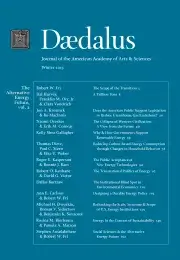Why & How Governments Support Renewable Energy
Many countries have adopted comprehensive policy frameworks to support renewable energy, but the United States has not adopted any consistent and stable policies at the national level to foster the use of renewable energy. This essay explores why some nations (Germany, China, and Denmark) and certain U.S. states (Colorado, Texas, and Ohio) have developed robust policies for the deployment of renewable energy. My aim is not to evaluate the specific policy mechanisms that countries and states have chosen, but rather to shed light on the underlying societal factors that contributed to each government’s decision to enact the policies in the first place. I explore four factors that could influence a government’s decision to adopt favorable policies for renewable energy: (1) economic motives; (2) a high endowment of renewable resources and/or a low endowment of nonrenewable sources; (3) the political system; and (4) cultural factors and attitudes.
Many countries have adopted comprehensive policy frameworks to support renewable energy, leading to a rapid scale-up of these technologies.1 One hundred and nine countries have enacted some form of policy regarding renewable power, and 118 countries have set targets for renewable energy.2 In contrast, the United States has not adopted any consistent and stable set of policies at the national level to foster the use of renewable energy. There is no federal carbon tax, no nationwide cap-and-trade system for carbon, and no long-term incentive mechanism for renewable energy generation. Federal support for renewable energy has consisted mainly of R&D and production tax credits. In this essay, I explore why some nations and certain U.S. states have developed robust policies for the deployment of renewable energy while the United States as a whole has not.
The U.S. production tax credit for renewable energy, first introduced in 1992, has repeatedly expired and then been extended. It has led to a boom-and-bust cycle that inhibits long-term investments. According to Jeff Immelt, chairman and CEO of General Electric, “The current energy markets don’t favor cleaner technology or low carbon. . . . No business will invest when there is no certainty. . . . If we’re serious about transforming our energy markets, we must send the right signals and create demand for the technologies that solve these problems.”3 While many technologies could contribute to an alternative energy future in the United States, including energy efficiency, nuclear energy, and carbon capture and storage, I concentrate here on renewable energy.
. . .
